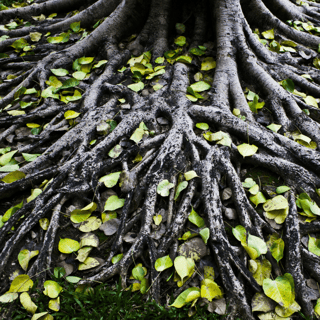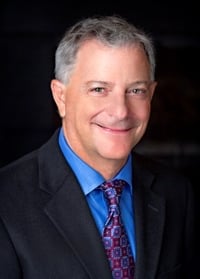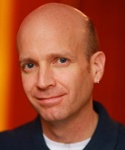Concurrent session with Dr. Steven Aizenstat and Dr. Douglas Thomas, Response at the Radical Edge: Depth Psychology for the 21st Century
Summary article by Bonnie Bright, Ph.D.
When we move out of identification with images that arise at critical moments in our lives (whether from dreams or other modalities), and into relationship with the image, we get information from the images. In other words, if we can grasp that the image we encounter is “not me,” we can benefit from its underlying wisdom.
 When you work with dreams from an animated point of view, notes Stephen Aizenstat, who pioneered the process of DreamTending[1], it brings the dream to life. When one comes into a relationship with the image, it allows the image its own innate intelligence, and it can speak to us what it knows.
When you work with dreams from an animated point of view, notes Stephen Aizenstat, who pioneered the process of DreamTending[1], it brings the dream to life. When one comes into a relationship with the image, it allows the image its own innate intelligence, and it can speak to us what it knows.
Traditional psychology doesn’t typically get us beyond a certain mode of analysis, Aizenstat insists, but in the case of depth psychology—and especially the practice of DreamTending—amplification (the process by which we discover a dream image’s connections to universal cultural themes), moves to animation of the image itself, and this makes all the difference. The real thrust of psychologies developed by Jung, post-Jungians, and archetypal psychologist James Hillman is the cultivation of imagination. Aizenstat founded the Global Dream Initiative™ , whose vision it is to “unite individuals and organizations in listening to the landscapes and creatures of the world as they speak through the images of dream.” The vision of GDI also suggests that “through the intelligence of dreams, we aspire to listen to the voice of the earth and serve as a source of education, orientation, and support for dreamers worldwide.”
The Global Dream Initiative, therefore, is interested in communitas, or working dreams within communities and in small groups. It is based on the idea that the world itself is always dreaming, which echoes the mission of Pacifica Graduate Institute of which Aizenstat is a founder and still serves as Chancellor 40 years after its inception. The Latin “Anima mundi colende gratia”—tending soul in and of the world—speaks to the reality that the world is enchanted and alive, where things “out there” have a voice, and they share their voice in dreams that we experience.
The cultural and political environment have changed a lot in the last year or two—not only in the U.S., but all over the world, Aizenstat notes. How, then, do we get into small groups and focus on keeping imagination alive? That is the arena where we can engage one another in ritual and in shared imagination. That’s the difference that makes a big difference, he maintains.
Clearly, then, the praxis of DreamTending is a way of animating Image. Bringing the work into form carries the hope of articulating it into policy. To that end, Aizenstat and what has now evolved into the Global Dream Initiative, have been working with the United Nations for the past 15-20 years to contribute to the formulation of the Earth Charter, a declaration of principles on behalf of the planet, social justice, and environmental efforts.
The mission of GDI offers a valuable platform via the following aims:
1) Gather dreamers and to bring into awareness the intelligence of the dreaming psyche
2) Listen to the voices of the planet as they speak through the images of dreams
3) Bring this awareness into organizational, institutional and governmental policy formation forums
4) Further develop educational approaches/offerings fostering archetypal activism in service to the soul of the world.
Dr. Douglas Thomas, a depth psychotherapist who has worked with Aizenstat in the practice of DreamTending for years shared his own insights and experience in leading dream groups as part of his therapy practice in Southern California since 2008.
“Response” relates to “spouse,” offered Thomas, who presented alongside Aizenstat at the conference. It refers to “that which we are wedded to”—perhaps something in our own destiny we are linked to. How do we respond that that connection, he asks. How are we being faithful to that destiny to which we are called?
 Our destiny may be seen as connected to the root of the tree of life that goes down into the depths. What are we wedded to that which will aid us in trying times. Paying attention to the dreams, not only individually but also by doing so with others, is a big part of what the Global Dream Initiative is about, Thomas maintains.
Our destiny may be seen as connected to the root of the tree of life that goes down into the depths. What are we wedded to that which will aid us in trying times. Paying attention to the dreams, not only individually but also by doing so with others, is a big part of what the Global Dream Initiative is about, Thomas maintains.
For six years, Thomas has led one particular dream group comprised of the same six women who have met together in a “stable and rich container” for hosting images in dreams. Together, the group has taken the perspective that dreams connect us with autonomous figures who are alive in imaginal space.
In his talk, Thomas shared powerful stories of how the group has benefited through changing times and the shifting political landscape. Engaging the practice of DreamTending in small dream groups offer skill sets that foster a deeper relationship with one’s dreams, he reveals. What might happen in other communities?
 For Steve Aizenstat, developing the practice of DreamTending came by way of a dream in which he heard the voice of his great grandfather, a shoe cobbler in Pasadena, CA, telling him about a book in a wooden chest that contained his future—a story Aizenstat shares in his book of the same name[3]. When he sought out his great grandfather’s sister in real life, Aizenstat was surprised to be given an old book written in Yiddish which his great grandfather had left for him at his death decades before.
For Steve Aizenstat, developing the practice of DreamTending came by way of a dream in which he heard the voice of his great grandfather, a shoe cobbler in Pasadena, CA, telling him about a book in a wooden chest that contained his future—a story Aizenstat shares in his book of the same name[3]. When he sought out his great grandfather’s sister in real life, Aizenstat was surprised to be given an old book written in Yiddish which his great grandfather had left for him at his death decades before.
A number of synchronicities led Aizenstat to archives of his great grandfather’s writings at UCSB in Santa Barbara, as well as details about his family even he didn’t know, and made meaning of distant memories Aizenstat still retained from childhood.
Recently Aizenstat was invited to travel to Belarus, where his great-father came from, to talk about DreamTending. Even now, he feels the presence of his great grandfather and acknowledges it, Aizenstat reveals. “Place” is also so important: “Landscape is a medium one can feel in your bones as it deepens into the psychological reality,” he believes.
When it comes to the practice of DreamTending, there are some distinct differences between more general practices of working with dreams and with DreamTending. In general dreamwork, there are three rather typical questions often accompany dreams, he points out:
1. What does this dream mean?
2. Why is it happening?
3. What does it have to do with me?
In DreamTending, on the other hand, the three key questions are
1. “Who is visiting now?”
2. What’s happening here?
3. What is the dream’s desire?
In the workshop at Pacifica’s “Response at the Radical Edge” conference, Aizenstat gifted the audience with a demonstration of DreamTending by working with an audience member. The practice includes turning the two chairs of the person tending the dream and the dreamer whose dream is being tending slightly outward from one another instead of directly face to face “to allow for something else to join in.”
It also requires that participants get centered: Aizenstat does a somatic exercise slapping knees and stomping feet, anchor down, and make room for what wants to emerge. It involves meeting the dream in the way that the dream (or poetry or song) want to be met, and above all, it allows the images themselves to bring the amplificatory effects rather than starting with the personal history of the person bringing the dream.
The stages of amplification and animation are based in part on the work of C.G. Jung; one first has to get the dream’s context, and then to animate it in order to grasp the story and meaning. Focusing on particularity is especially important, so engaging our senses as we work the dream allows us to enter the image more concretely. Perhaps the most critical piece, however, is that we must move out of identification and possession of the image and allow the image to emerge, Aizenstat emphasizes.
In the demonstration Aizenstat offered to the group that day, he and the dreamer touched on both personal and collective images and themes. The idea of making offerings in the process emerged, and Aizenstat likened it to “feeding the gods.” The gods are not abstractions, he insists; Rather, those figures are indigenous to the psyche. When we feed them, something happens: it becomes our evolutionary individuation. The images themselves also individuate and implicate us into the work, he asserts.
Once we do the feeding, we need to watch and notice. What dream follows next, for example, and what about the one after that? Each dream, each image is a contribution to a bigger story.
Through this process, we develop a community of soul figures, Aizenstat noted in closing. The figures in our dreams become “intimate others”—soul figures. They become deeply present and offer the capacity for powerful relationships. We can “live into” these relationships in times of crisis, of deep personal loss, or of incredible genius. These most intimate others are these amazing figures of soul which are right here with us.
“The Global Dream Initiative is all about that,” Aizenstat observes, “Coming into small communities all around the world, sharing in this way, opening up, letting the figures come forward offering themselves to our imagination, and listening to what is being asked of us.”
[1] Find out more about the practice of DreamTending at www.DreamTending.com
[2] Learn more about the Global Dream Initiative at www.globaldreaminitiative.com
[3] See Aizenstat’s book. Dream Tending: Awakening to the Healing Power of Dreams, Spring Journal, 2011.
 Steven Aizenstat, Ph.D., is the Chancellor and Founding President of Pacifica Graduate Institute. He is a professor of depth psychology with a Ph.D. in clinical psychology, licensed marriage and family therapist, and a credentialed public schools teacher and counselor. Dr. Aizenstat has provided organizational consulting to companies and agencies and teaches extensively worldwide. Dr. Aizenstat has explored the potential of dreams through depth psychology and his own research for more than 35 years. His Dream Tending methodologies extend traditional dream work to the vision of an animated world where the living images in dream are experienced as embodied and originating in the psyche of Nature as well as that of persons. His work opens creativity and the generative process. His book, Dream Tending, describes multiple new applications of dreamwork in relation to health and healing, nightmares, the World’s Dream, relationships, and the creative process. His other recent publications include: Imagination & Medicine: The Future of Healing in an Age of Neuroscience (co-editor with Robert Bosnak); “Dream Tending and Tending the World,” in Ecotherapy: Healing with Nature in Mind; “Soul-Centered Education: An Interview with Stephen Aizenstat” (with Nancy Treadway Galindo) in Reimagining Education; Essays on Reviving the Soul of Learning; The Soul Does Not Specialize: Revaluing the Humanities and the Polyvalent Imagination, with Dennis Patrick Slattery and Jennifer Leigh Selig: “Depth Entrepreneurship: Creating an Organization out of Dream Space”, in The Transforming Leader: New Approaches to Leadership for the Twenty-First Century; and “Fragility of the World’s Dream”, in Eranos Yearbook 2009-2010-2011 Love on a Fragile Thread.
Steven Aizenstat, Ph.D., is the Chancellor and Founding President of Pacifica Graduate Institute. He is a professor of depth psychology with a Ph.D. in clinical psychology, licensed marriage and family therapist, and a credentialed public schools teacher and counselor. Dr. Aizenstat has provided organizational consulting to companies and agencies and teaches extensively worldwide. Dr. Aizenstat has explored the potential of dreams through depth psychology and his own research for more than 35 years. His Dream Tending methodologies extend traditional dream work to the vision of an animated world where the living images in dream are experienced as embodied and originating in the psyche of Nature as well as that of persons. His work opens creativity and the generative process. His book, Dream Tending, describes multiple new applications of dreamwork in relation to health and healing, nightmares, the World’s Dream, relationships, and the creative process. His other recent publications include: Imagination & Medicine: The Future of Healing in an Age of Neuroscience (co-editor with Robert Bosnak); “Dream Tending and Tending the World,” in Ecotherapy: Healing with Nature in Mind; “Soul-Centered Education: An Interview with Stephen Aizenstat” (with Nancy Treadway Galindo) in Reimagining Education; Essays on Reviving the Soul of Learning; The Soul Does Not Specialize: Revaluing the Humanities and the Polyvalent Imagination, with Dennis Patrick Slattery and Jennifer Leigh Selig: “Depth Entrepreneurship: Creating an Organization out of Dream Space”, in The Transforming Leader: New Approaches to Leadership for the Twenty-First Century; and “Fragility of the World’s Dream”, in Eranos Yearbook 2009-2010-2011 Love on a Fragile Thread.
 Douglas Thomas, Ph.D., has a private Jungian based psychotherapy practice in Pasadena and he teaches as adjunct faculty at Pacifica Graduate Institute in Carpinteria, California. He has presented workshops and talks throughout the state of California on LGBTQ issues and on dream therapy, his two areas of specialization. Dr. Thomas holds a masters degree from the USC School of Social Work, and a PhD in Depth Psychology with an emphasis in psychotherapy from Pacifica Graduate Institute. Over the past decade he has studied and refined Steven Aizenstat’s method of Dream Tending through ongoing training and collaboration with its creator in workshops, seminars, and retreats. For more information, visit Dr. Thomas’ website at drdouglasthomas.com.
Douglas Thomas, Ph.D., has a private Jungian based psychotherapy practice in Pasadena and he teaches as adjunct faculty at Pacifica Graduate Institute in Carpinteria, California. He has presented workshops and talks throughout the state of California on LGBTQ issues and on dream therapy, his two areas of specialization. Dr. Thomas holds a masters degree from the USC School of Social Work, and a PhD in Depth Psychology with an emphasis in psychotherapy from Pacifica Graduate Institute. Over the past decade he has studied and refined Steven Aizenstat’s method of Dream Tending through ongoing training and collaboration with its creator in workshops, seminars, and retreats. For more information, visit Dr. Thomas’ website at drdouglasthomas.com.
 Bonnie Bright, Ph.D., is a graduate of Pacifica’s Depth Psychology program, and the founder of Depth Psychology Alliance, a free online community for everyone interested in depth psychologies. She also founded DepthList.com, a free-to-search database of Jungian and depth psychology-oriented practitioners, and she is the creator and executive editor of Depth Insights, a semi-annual scholarly journal. Bonnie regularly produces audio and video interviews on depth psychological topics. She has completed 2-year certifications in Archetypal Pattern Analysis via the Assisi Institute and in Technologies of the Sacred with West African elder Malidoma Somé, and she has trained extensively in Holotropic Breathwork™ and the Enneagram.
Bonnie Bright, Ph.D., is a graduate of Pacifica’s Depth Psychology program, and the founder of Depth Psychology Alliance, a free online community for everyone interested in depth psychologies. She also founded DepthList.com, a free-to-search database of Jungian and depth psychology-oriented practitioners, and she is the creator and executive editor of Depth Insights, a semi-annual scholarly journal. Bonnie regularly produces audio and video interviews on depth psychological topics. She has completed 2-year certifications in Archetypal Pattern Analysis via the Assisi Institute and in Technologies of the Sacred with West African elder Malidoma Somé, and she has trained extensively in Holotropic Breathwork™ and the Enneagram.



